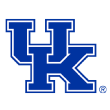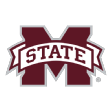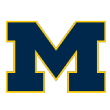The top of the 2019 NFL draft is likely to be dominated by edge rushers. As many as four edge rushers are projected to go in the top 10, thus a team with a high pick and a need to upgrade their pass rush is likely to have plenty of highly touted options. But will this group live up to the hype? Will the 2019 draft be to edge rushers what the 1983 draft was to quarterbacks?
SackSEER, Football Outsiders' statistical system for projecting college edge rushers to the next level, wants to throw just a bit of cold water on the hype following edge rushers in this draft. Although SackSEER agrees that it is a reasonably deep draft for edge rushers, it also believes that this draft lacks a truly top-tier prospect like Khalil Mack or Von Miller.
Rather, SackSEER lumps this year's top edge rushers together in a group of good-but-not-great prospects who will likely have some success at the NFL level, but could just as easily bust. Additionally, SackSEER's best prospect this year -- who wins that distinction by a projection of less than half a sack -- is a player who might not even go in the first round.
For more detail on how SackSEER works, click here. What follows is a ranking of the top edge rusher prospects for 2019 according to our model:

Brian Burns, Florida State Seminoles
SackSEER Projection: 26.6 sacks through five seasons
Scouts, Inc. overall ranking: No. 35
Similar historical prospects: Jadeveon Clowney, Dontay Moch
Burns' combination of good production and athleticism earns him the top spot in this year's SackSEER projections. Burns recorded 23 sacks and seven passes defensed in only three seasons at Florida State. His workouts, however, were even better. Burns ran a freakish 4.53-second 40-yard dash -- the same time Clowney recorded in 2014. Burns' broad jump and vertical jump were not quite as good as his 40, but were both well above average, leaving Burns with an excellent explosion index. Burns also recorded a strong 7.01-second 3-cone time.
The greatest knock on Burns is that he played light at Florida State -- he weighed in at only 235 pounds. However, Burns bulked up to 249 for the combine and obviously did not lose much of his athleticism. Burns might have to play as an outside rush linebacker in the NFL, but he has a great chance to excel in that role.

Josh Allen, Kentucky Wildcats
Kentucky linebacker Josh Allen took his game to another level this past season, leading the SEC with 17 sacks and proving he's worth a top-five pick in the NFL draft.
SackSEER Projection: 26.3 sacks through five seasons
Scouts, Inc. overall ranking: No. 3
Similar historical prospects: Ryan Kerrigan, Aldon Smith
Allen has an all-around good, but not great, projection. He had 17 sacks in 13 games as a senior, which are really good numbers, but almost all senior edge rushers drafted in the first few rounds have good senior numbers, so those 17 sacks do not give Allen the boost you might expect. Similarly, Allen had a good combine workout, but it was far from historically great. Allen ran a 4.63-second 40-yard dash, which is a great time for a 262-pound player, but was only average on his jumps, recording vertical and broad jumps of 33.5 inches and 9-foot-10, respectively.
Continuing the theme, Allen had above average passes defensed numbers, but only slightly above average. Allen had one interception and eight passes batted away, which again is good, not great. For perspective, Allen's passes defensed are way better than famous bust Vernon Gholston (who had only one pass defensed in his college career), but not quite as good as Mack (who had 25 passes defensed).
The upside to Allen's SackSEER is that his numbers are all-around good and he has no glaring weaknesses (at least from a statistical standpoint). In that regard, Allen is similar to Kerrigan, who was also unusual in his uniformly good but not quite great SackSEER numbers.

Montez Sweat, Mississippi State Bulldogs
Draft Academy previews the lead-up to the NFL draft for six NFL prospects, including Nick Bosa and Marquise Brown.
SackSEER Projection: 25.7 sacks through five seasons
Scouts, Inc. overall ranking: No. 10
Similar historical prospects: Bruce Irvin, Anthony Barr
Sweat proved at the combine that he is explosive, fast and quick. He recorded a 2019 edge-rusher-best, 4.41-second 40-yard dash as well as good jumps and a good 3-cone time. Sweat also proved that he was good at sacking the quarterback at Mississippi State, recording 22.5 sacks in just 26 games for the Bulldogs.
The one black mark on Sweat's SackSEER is his zero career passes defensed. In that regard, Sweat is similar to former first-rounder Irvin. Irvin, like Sweat, entered the draft as a senior after playing only two seasons of major college football. Irvin also had good combine numbers, lots of college sacks, but only one pass defensed. Irvin finished his first five years in the NFL with 29 sacks, which is close to Sweat's projection.

Nick Bosa, Ohio State Buckeyes
Oshane Ximines is a defensive end from Old Dominion who was first-team Conference USA in 2018.
SackSEER Projection: 22.1 sacks through five seasons
Scouts, Inc. overall ranking: No. 1
Similar historical prospects: Joey Bosa, Brandon Graham
Despite being ranked first overall on many boards, Nick Bosa does not have the numbers to top SackSEER's list of top edge rushers. Bosa had good college sack production, but much of it is uncertain. Bosa was on the way to having a breakout season as a junior, but played only four games, so there is no way of knowing whether he would have kept up that pace. Bosa also has only two career passes defensed, which is below average for a drafted edge rusher. Bosa's explosion numbers at the combine were also below average.
None of his metrics doom him to failure -- far from it. Bosa is still an above-average edge rusher prospect, but he does not possess the typical indicia of a future NFL star at the position. To be fair to him, SackSEER somewhat underprojected his brother, Joey Bosa.
It could be that Nick has the same qualities that allowed his brother to overperform his SackSEER projection. That said, Joey Bosa's projection was similar, but stronger than Nick's. Joey had slightly above average passes defensed numbers, while Nick's are below average. Joey's and Nick's explosion numbers were similar, but Joey was much quicker, recording a 6.89-second 3-cone time as opposed to Nick's 7.10-second time. Nick Bosa's uncertain SackSEER should at least give teams pause before they assume that he will be able to replicate his older brother's success in the NFL.

Rashan Gary, Michigan Wolverines
Check out some highlights from NFL draft prospect Clelin Ferrell's 2018 season with the Clemson Tigers.
SackSEER Projection: 22.1 sacks through five seasons
Scouts, Inc. overall ranking: No. 5
Similar historical prospects: Frank Clark, Margus Hunt
Gary is the quintessential raw talent. He has amazing athleticism for his 277-pound size. Gary ran the 40-yard dash in 4.58 seconds, which he paired with a 38-inch vertical leap and a 10-foot broad jump. However, Gary does not have much sack production -- his best season was 5.5 sacks in 13 games as a sophomore. Also, he did not record a single pass defensed.
Luckily for Gary, there are certainly examples of successful edge rushers in the NFL who had the athletic measurables but lacked college production. For example, Clark, who also attended the Michigan, had good explosion numbers for his size, but few college sacks. Despite his lack of college bona fides, Clark has 35.0 NFL sacks in just four seasons. Gary could follow a similar career trajectory; however, he could just as easily end up like Hunt, a freakish athlete who has been relegated mostly to role-player status in the NFL.

Zach Allen, Boston College Eagles
SackSEER Projection: 19.6 sacks through five seasons
Scouts, Inc. overall ranking: No. 48
Similar historical prospects: Ereck Flowers, Jabaal Sheard
Allen is a big defensive end at 280 pounds who might be better suited as a 3-4 defensive end or a run-stopping end in a 4-3. Allen is far from a Julius Peppers-level athlete, running the 40-yard dash in a glacial five seconds. However, Allen leads the class in passes defensed rate, intercepting two passes and batting down 14 others for the Eagles, suggesting possible untapped pass-rushing potential.

Oshane Ximines, Old Dominion Monarchs
SackSEER Projection: 18.0 Sacks through five seasons
Scouts, Inc. overall ranking: No. 62
Similar historical prospects: Shaun Phillips, Daniel Te'o-Nesheim
Ximines is a small-school prospect who is worth a flyer in the late second or early third rounds. After all, Jared Allen and Robert Mathis, two highly successful NFL edge rushers, attended Idaho State and Alabama A&M, respectively. Although Ximines had a mediocre combine, he was extremely productive in college, with 51 sacks and 13 passes defensed.

Clelin Ferrell, Clemson Tigers
SackSEER Projection: 17.6 sacks through five seasons
Scouts, Inc. overall ranking: No. 29
Similar historical prospects: Victor Abiamiri, Michael Haynes
Clemson has sent a lot of edge rushers to the NFL with varying degrees of success. According to SackSEER, Ferrell is a thoroughly average draft prospect who probably does not belong in the first two rounds. Ferrell had few passes defensed in college and his sack numbers were just OK. Ferrell did not do a complete workout at the combine and did not work out at his pro day due to a toe injury. The only SackSEER-relevant drill Ferrell performed was the 3-cone, which was a below-average 7.26 seconds.
Methodology
SackSEER is based on a statistical analysis of all edge rushers drafted in the years 1998-2017, and measures the following:
The edge rusher's projected draft position. These projections use the rankings from ESPN's Scouts, Inc.
An "explosion index" that measures the prospect's scores in the 40-yard dash, the vertical leap, and the broad jump in pre-draft workouts
The prospect's score on the three-cone drill
A metric called "SRAM" which stands for "sack rate as modified." SRAM measures the prospect's per game sack productivity, but with adjustments for factors such as early entry in the NFL draft and position switches during college
The prospect's college passes defensed divided by college games played
The number of medical redshirts the player either received or for which he was eligible
